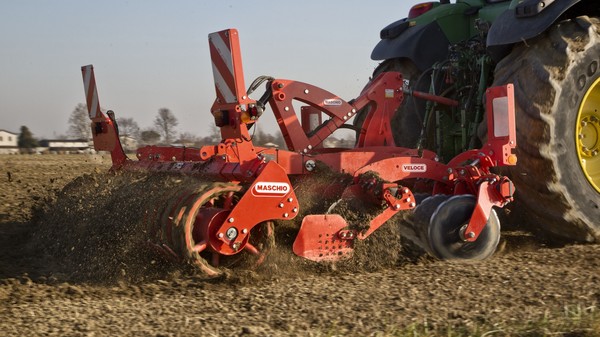
Contracting is good for the environment
The use of agromechanical contractors for agricultural work is often an obligatory choice. If the machinery's road travel distances are not excessively long, it is a largely sustainable option, because it has been shown to have lower environmental impacts than own-account work
The environmental impact, or more generally the sustainability, of any product and process (thus including agricultural production) can only be reduced after its accurate quantification. Although it has now been reasonably ascertained that the main causes of the environmental impact of agricultural activity depend substantially on animal husbandry, and in particular on the management of wastewater, it should nevertheless be remarked that the use of machinery, and in particular the performance of the most energy-consuming operations such as tillage, accounts for a not always marginal share of pollutant emissions, which can reach 10 percent of the total value, notably in open field productions (grain cereals, protein crops, but also some vegetable or fruit crops).
There are many variables to be considered, also relating to the way the machinery fleet is selected and managed, basically understood as work performed on considerable areas by agro-mechanical enterprises, on the one hand, and by direct growers who generally dominate modest areas, on the other.
Direct grower and contractor
Although this is a generalization that sadly cannot encompass the totality of cases, as far as the organization of the farm's machinery fleet and the mechanization of work are concerned, the main distinctions between contractor and direct grower concern the use of machines of different size or power, their turnover, but also the number and variety of the fleet. It must also be considered that part of the environmental benefits undoubtedly derive from reduced consumption, and more generally from greater efficiency of use, which also brings tangible economic benefits.
A case in point: tillage and seeding
The massive reliance on contracting for the harvesting of field products (cereals, corn silage, certain horticultural crops, etc.) has always been a generalized practice, due to the high cost of specific machines, which otherwise would be decidedly uneconomical, if purchased to dominate the small areas typical of the direct grower. Moreover the tendency to contract out to agromechanical contractors other operations, such as tillage and planting, is growing steadily.
Indeed, when carried out by the contractor these operations have a lower impact than when carried out on their own account, and particularly on the aspects for which agricultural activity is usually accused of being unsustainable, namely global warming or climate change (CC), particulate matter (PM) formation, and fossil resource depletion (FD). The benefits are clear, with reductions ranging from 15-70% in the case of conventional tillage, and 10-45% if minimum tillage is implemented. In more detail, the reductions inherent in climate change and fossil resources depend on the reduction in diesel fuel consumption, while the reduction in particulate matter (PM) emission also relates to the contractor's use of more advanced tractors that conform to a much more stringent emission standard than the models of even a few years ago. In the face of numerous aspects that make the work of the contractor more sustainable than that of the direct grower, however, there is an important variable, generally little considered, that could come to turn the situation upside down, namely the distance between the usual housing point of the machinery and the plots worked. In general, it can be guessed that even in the case of farms that are not single-body, this distance is considerably less for the direct grower, since the contractor's client farms are usually located, at best, at a radius from his headquarters, but over distances of a few tens of kilometers. While taking into account the maximum efficiency of machine movements (in fact, one does not always return to headquarters for overnight shelter), it is therefore essential to also take into account the impacts of the transfers, and thus what might be a "limiting distance" traveled by the contractor's vehicles that would negate the benefits described above.
Indeed, the organizational arrangements of an agro-mechanical enterprise are varied; usually, if the distance from the headquarters is not negligible, relocation takes place only when the area to be worked allows for several hours or, better, for the entire day. In the case of longer distances, it is logically more efficient to leave the machinery on site and provide for daily relocation of only the tractor drivers.
Assuming transfer for an entire day of primary tillage, and on the basis of a per kilometer calculation, it is possible to calculate the limit beyond which the contractor's machinery impacts more than that of the direct grower, who performs the same tillage with farm machinery and travels an average of no more than one kilometer. Taking the best-known environmental indicators together, the impact inherent in the transfer phase evens out the balance only for considerable distances, generally greater than those usually traveled by contractors' equipment. In particular, with regard to global warming, the use of the contractor becomes less sustainable only for distances greater than 28 km, while for fossil resource depletion the limit is slightly higher.
Obviously, the result obtained is relative to a set of starting data referring to a typical reality of the Po Valley, and therefore should be interpreted as indicative in that context.
More generally, the data can be usefully interpreted as an order of magnitude, i.e., it is basically confirmed that in terms of environmental sustainability, the range of action of the agromechanical enterprise should be a few tens of kilometers from its headquarters; otherwise, as, moreover, sometimes happens, (autonomous) displacements of vehicles of hundreds of kilometers cancel out these benefits and tip the ideal balance in favor of the use of own-account machines.








